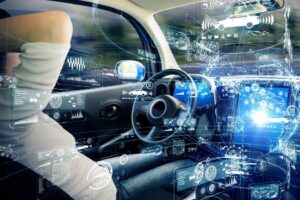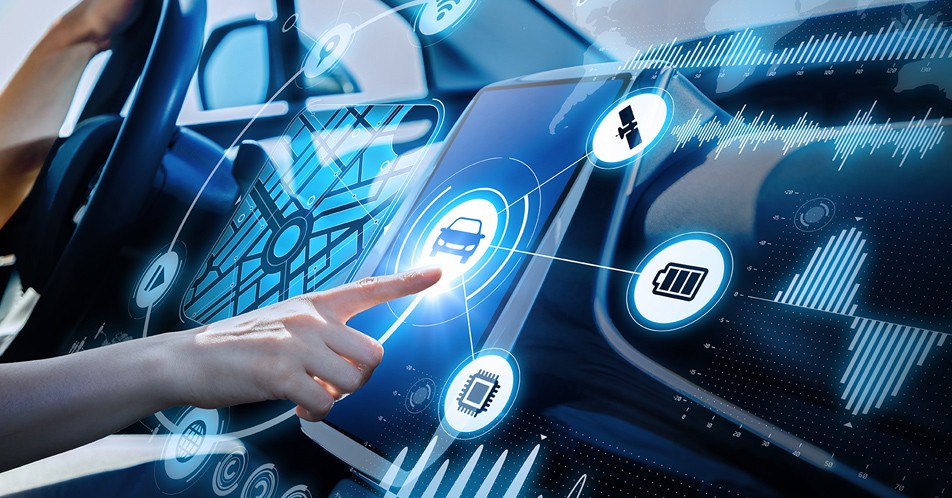Digital Transformation in the Automotive Industry
Digital transformation in the automobile industry changes everything in vehicle design, production, and customer engagement. This technological development incorporates artificial intelligence, IoT, and big data analytics to better the manufacturing processes, safety, and performance aspects. Automakers and suppliers alike are embracing such digital solutions to cut costs and waste while developing personalized driving experiences in today’s competitive market. It is a fast-paced, rapidly evolving industry into new digital workflows based on the growing demands of consumers and increasing environmental challenges.
It isn’t simply advanced change; rather, the auto organizations are likewise being more centered around maintainability and brilliant portability arrangements. High-level sensors and networks empower continuous diagnostics and prescient support with decreased margin time and further developed well-being. This shift will improve efficiency but also fuel innovation in supply chains. Also Read: SkyLightVoice.com
What Is Digital Transformation in the Automotive Industry?
It simply refers to the smooth integration of advanced digital technologies in every activity associated with automobile design, manufacture, and servicing. This involves making use of the innovation aspects like artificial intelligence, machine learning, IoT, and big data analytics. Thus, improved efficiency, safety, and a personalized driving experience can be achieved through it.
Traditionally, this automobile industry is improved through new technological advancements. Examples range from pioneering assembly lines pioneered by Henry Ford to integrating robots and computer-based design within vehicles. Indeed, these represent various steps that shape the ways today’s ‘smart’ car systems are manufactured through data monitored today.
Today, digital transformation breeds sustainable growth and innovation. Automakers are using predictive analytics and automated systems, thus optimizing their operations to save costs and predict consumer needs. This shift also modernizes the original traditional manufacturing, hence boldly putting the industry in the best place looking to the future with increased performance and safe, efficient transportation.

Key Technologies Driving Digital Transformation
- Internet of Things (IoT): The vehicle and assembling plant are checking and controlling the situation continuously with the assistance of associated gadgets and sensors. It redresses the very function of a vehicle through real-time data acquisition, optimized performance, and improvement in the process of production. It minimizes downtime and gets machinery and vehicles to their peak performance levels.
- Artificial Intelligence & Machine Learning: These technologies use massive amounts of data to predict maintenance needs and support autonomous driving. AI and machine learning can make better decisions, improve safety, and customize customer experiences by processing complex information quickly and accurately.
- Big Data & Analytics: Data analytics drives strategic decision-making through the processing of huge volumes of production, supply chain, and customer data. Manufacturers can achieve optimization of operations, predict trends, and derive valuable insights that lead to efficiency improvements and competitive advantage.
- Cloud Computing and 5G Connectivity: These innovations ensure real-time data exchange and remote diagnostics, while communication can be easily passed across various systems. Better connectivity supports faster, more reliable operations and a fully integrated automotive ecosystem.
Advantages of Digital Transformation in the Automotive Industry
- Operational Efficiency: Technological advancement in digital transformation helps streamline the production process with advanced automation and robotics, ensuring an optimized supply chain. Such technologies reduce idle time, lower the cost of production, and enhance productivity.
- Better Customer Experience: Digital solutions enable personalized services, allowing seamless buying journeys and better after-sales support. This personalized approach enhanced customer satisfaction and, therefore, longevity for a brand.
- Innovation and Competitiveness: Integrating modern digital tools fosters speedy innovation in both product development and new business models. This creates continuous innovation so that companies in the market continually stay ahead in the game of competition.
These together enable car manufacturers to evolve and transform business models, develop sustainable growth paths, and derive competitive advantage. Through these changes in digital advances, automotive businesses can be positioned more effectively towards changes in market demand and gain higher operational resilience. This total digital strategy can further improve the performance of such organizations while establishing their competitiveness within an ever-changing market.
Difficulties of Digital Transformation in the Automotive Industry
- Integration Complexity: The old systems and legacy infrastructure require large periods as well as much effort to be integrated with new digital solutions. Therefore, much time, money, and energy are needed to bridge these gaps.
- Network Protection and Information Security: The more electronically associated the vehicles and assembling processes become, the more noteworthy the dangers of digital assaults, information breaks, and, subsequently, tight safety efforts required. High Investment Costs:
- Regulatory Compliance: Constantly evolving regulations require continuous adjustments in digital practices to ensure safety and legal adherence.
- Interoperability Challenges: Integrating diverse systems and standards across the supply chain complicates data sharing and smooth operational flow.

Future Trends in Automotive Digital Transformation
Future trends in automotive digital transformation are expected to be increasingly connected and intelligent vehicles, with robust IoT integration and advanced V2X communication that will enable seamless data exchange and safer road networks. As the network extends, vehicles will connect with the brilliant framework, furnishing drivers with ongoing traffic updates and danger alerts.
Man-made brainpower and AI are set to alter independent driving and prescient upkeep. The technologies will bring safety and efficiency, empowering vehicles to dynamically adapt to road conditions while allowing manufacturers to optimize production. Data analytics will be further refined, thereby reducing waste and cutting costs.
Emerging technologies will include cloud computing, 5G connectivity, and blockchain. These will guarantee secure data exchange and remote diagnostics, driving innovation across the entire industry. It will be driven by sustainability, and customer-centric design, and therefore promises a future of automotive digital transformation that promises a revolution in mobility that will be safer, more efficient, and environmentally responsible, ensuring transformative benefits across global markets.
Case Studies and Real-World Examples
The digital transformation journey of the automotive industry is full of rich insights from leaders and real-world examples.
- Industry Leaders: Organizations like Tesla, BMW, and General Engines are among the car pioneers who have figured out how to execute computerized change in the business. Over-the-air programming refreshes at Tesla, associated vehicle drives at BMW, and information examination by GM have changed the assembling as well as client commitment rehearses in the business. These companies apply automation, IoT, and predictive analytics for better production optimization and performance improvement.
- Lessons Learned: Real-life case studies illustrate the urgency of having a well-defined digital vision, good cybersecurity, and constant employee education. The best practices include designing scalable platforms, encouraging cross-functional collaboration, and investing in customer-centric technologies. Avoid the pitfalls of underestimating integration challenges, neglecting legacy systems, and overlooking data privacy issues. Automotive firms gain valuable insights for case studies which result in measurable improvements in efficiency, innovation, and market responsiveness across global markets.
These case studies are a roadmap for future innovation, guiding companies toward enhanced efficiency and competitiveness. Embracing digital transformation is imperative.
FAQs
What is automotive digital transformation?
It is the integration of advanced digital technologies into vehicle design, production, and customer services to enhance efficiency, safety, and innovation.
How does IoT contribute to automotive digital transformation?
IoT helps connect sensors and devices for real-time monitoring which allows for predictive maintenance and smarter production processes.
What are the absolute most normal difficulties of computerized change?
Inheritance framework coordination, network safety risks to the board, and venture costs are a couple of key difficulties.
Conclusion
Innovative headways like IoT, artificial intelligence, and 5G availability are changing the car business. Such mediations have affected the viability, security, and advancement of assembling, tasks, and client commitment. Using data analytics along with smart automation, automakers can streamline processes and make better decisions that support sustainable growth and enhanced performance.
As the automotive landscape evolves, companies must invest in scalable digital solutions and continuous workforce training. This is meant to help overcome challenges such as legacy systems and cybersecurity risks. With strategic investments and agile approaches, the industry is ready to attain greater competitiveness and deliver smarter, more connected vehicles for a future-ready mobility ecosystem. Ultimately, these innovations pave the way for a sustainable and dynamic future, remarkably innovative.

